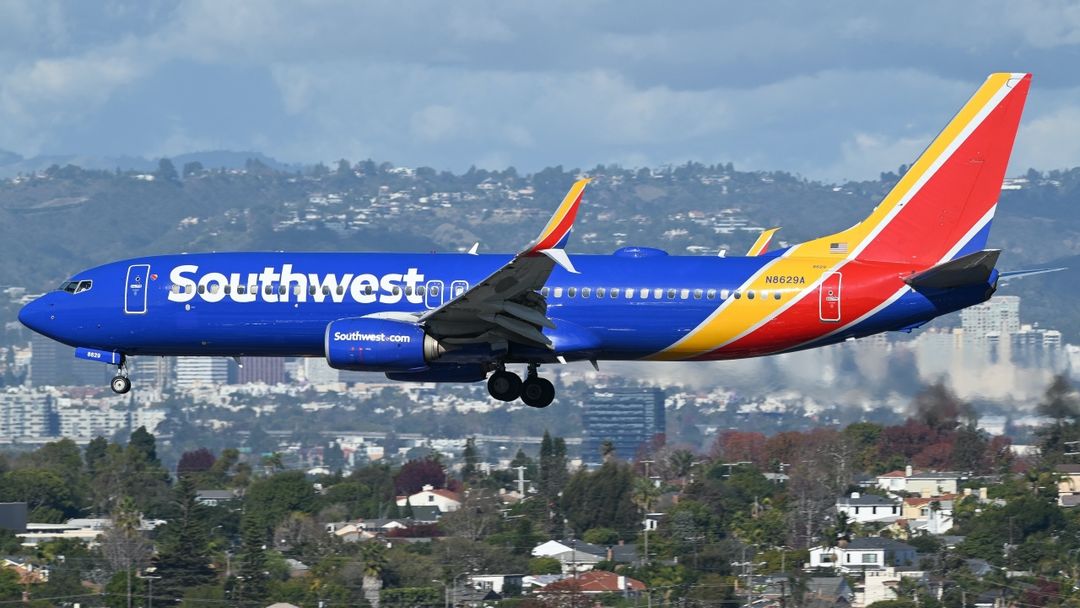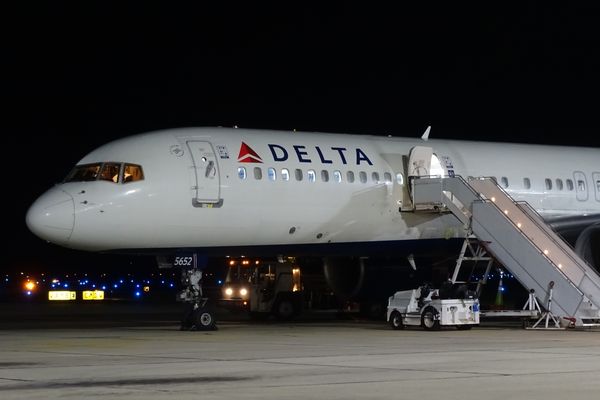Southwest Airlines announced the launch of Southwest Airlines Renewable Ventures (SARV), a subsidiary focused on helping the airline achieve its sustainability goals by obtaining sustainable aviation fuel (SAF). Southwest also announced a $30 million investment in sustainable fuel technology company and producer LanzaJet.

Southwest Airlines Renewable Ventures
Southwest views SARV as key to accomplishing its goal of having 10% of its total jet fuel consist of SAF by 2030. SARV will focus on managing the airline's SAF investment with the division's portfolio including companies that Southwest previously invested in, such as SAFFiRE Renewables (SAFFiRE). SAF offtake agreements will continue to be conducted through another division at Southwest.
SAFFiRE is an important stakeholder since the company's technology can create the cellulosic ethanol required for SAF production. The technology converts corn stover, a widely available agricultural residue feedstock, into cellulosic ethanol. SAFFiRE is one of the few companies that can conduct this process due to a license agreement and collaboration with the U.S. Department of Energy's National Renewable Energy Laboratory.

Tom Nealon, SARV's President and SAFFiRE's CEO, said about the launch of the subsidiary:
"SARV's goal is to help scale SAF through strategic investments, better positioning Southwest to have access to high quality, affordable SAF in accordance with the robust standards of Southwest's SAF policy. Through SARV's investment in LanzaJet, we're also entering the next phase in the commercialization of SAFFiRE technology, which is designed to support the production of cellulosic ethanol that can be converted to SAF."
SAF is one component of Southwest's Nonstop to Net Zero plan that outlines multiple steps towards reaching net zero carbon dioxide emissions by 2050. The other components include the following:
- Reducing single-use plastics from inflight service by 50% by weight by 2025 and eliminating them entirely (where feasible) by 2030.
- Saving 50 million incremental gallons of jet fuel by 2025 and 1.1 billion cumulative gallons by 2035.
- Electrify 50% of eligible ground support equipment by 2030.
- Diminishing emissions intensity by 50% by 2035.
- Shrinking the energy utilization index in its Dallas headquarters by 50% by 2035.

$30 Million Investment in LanzaJet
Southwest and LanzaJet will collaborate on developing a SAF production facility and helping SAFFiRE's cellulosic ethanol become SAF. LanzaJet will develop a facility somewhere in the U.S., while Southwest will be the anchor SAF offtaker. The company's technology can scale SAF production to the levels required to decarbonize aviation and help the industry reach a goal of net zero emissions by 2050. LanzaJet will also assist Southwest with commercializing SAFFiRE's technology, which converts corn stover into cellulosic ethanol.
LanzaJet's CEO Jimmy Samartzis said about Southwest's investment:
"The U.S. is an incredibly important market for us – it's our home, where our technology originated and scaled, the site of our and the world's first commercial ethanol-to-SAF plant, and an important opportunity to support the existing U.S. biofuels and ethanol industries with our leading ethanol-to-SAF technology."

"The alignment of Southwest and LanzaJet is a powerful combination that has the potential to integrate the SAF value chain and to double-down on the U.S. ethanol, aviation, and biofuel industries. Our work together will lead us closer to meeting aviation's decarbonization goals by continuing to scale SAF production in the United States, while also tapping into the U.S. ethanol industry's potential to catalyze the next generation of SAF production."
LanzaJet's newly announced facility will convert SAFFiRE's cellulosic ethanol into SAF. Southwest's $30 million investment comes one month after LanzaJet opened the world's first commercial-scale plant converting ethanol to SAF. The LanzaJet Freedom Pines Fuels plant in Georgia will produce SAF and renewable diesel from ethanol in a low-carbon manner. The company aims to produce one billion gallons of SAF by 2030.
Frontier Airlines Wraps Up 2025 with Major International Expansion from Atlanta » The Top 5 Longest Flights in the World » End of an Era: JetBlue's Farewell to the Embraer E190 »
Comments (0)
Add Your Comment
SHARE
TAGS
NEWS Southwest Airlines LanzaJet SAF Sustainable Aviation Fuel Innovation Sustainability Investment FinanceRECENTLY PUBLISHED
 Game Day: The Unseen Operation Behind College Sports Travel
At one of the largest Division I programs in the country, six-figure sports charters quietly keep game day moving. We went airside at the University of Illinois-Willard Airport to see who plans them, how aircraft and crews are positioned, and why a single schedule change can ripple through an entire airline.
STORIES
READ MORE »
Game Day: The Unseen Operation Behind College Sports Travel
At one of the largest Division I programs in the country, six-figure sports charters quietly keep game day moving. We went airside at the University of Illinois-Willard Airport to see who plans them, how aircraft and crews are positioned, and why a single schedule change can ripple through an entire airline.
STORIES
READ MORE »
 Coloring the Clouds: How ANA Turned Airplanes into Art
ANA's long-running tradition of special liveries has transformed its fleet into a flying gallery of Japanese culture, featuring iconic partnerships with franchises like Pokémon, Star Wars, and Demon Slayer. We explore these liveries and the stories behind them.
INFORMATIONAL
READ MORE »
Coloring the Clouds: How ANA Turned Airplanes into Art
ANA's long-running tradition of special liveries has transformed its fleet into a flying gallery of Japanese culture, featuring iconic partnerships with franchises like Pokémon, Star Wars, and Demon Slayer. We explore these liveries and the stories behind them.
INFORMATIONAL
READ MORE »
 End of an Era: JetBlue's Farewell to the Embraer E190
On September 9, 2025, after nearly two decades of service, JetBlue Airways brought an end to an era with the retirement of its Embraer E190 fleet.
INFORMATIONAL
READ MORE »
End of an Era: JetBlue's Farewell to the Embraer E190
On September 9, 2025, after nearly two decades of service, JetBlue Airways brought an end to an era with the retirement of its Embraer E190 fleet.
INFORMATIONAL
READ MORE »



